Travel around
Top 10 attractions in Shanxi
Updated:2012-10-08 16:23( china.org.cn)
No.10: House of the Huangcheng Chancellor
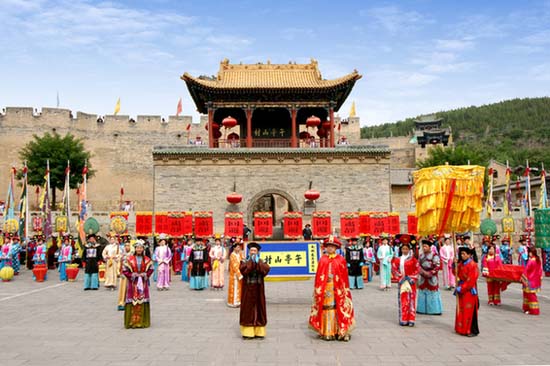 |
| House of the Huangcheng Chancellor |
Located in southeast Shanxi Province, the House of the Huangcheng Chancellor is one of the most famous historic sites to visit. It was the home of Chen Tingjing (1638-1712), a royal teacher of Emperor Kangxi as well as the editor-in-chief of the Kangxi Dictionary in Qing Dynasty (1644-1911).
It is actually a palace, or a town, which contains a group of castle-style buildings. It was designed in two architectural styles. The inner palace was designed in the Ming Dynasty (1368-1644) by his uncle Chen Changyan in 1633. The outer complex was finished in Qing Dynasty by Chen Tingjing himself in 1703. The palace has 19 gardens and yards, 640 rooms and 9 castle gates, covering an area of 90,000 square meters (9 hectares). It has a wall which is 1,700 meters long and 12 meters high.
The palace attracts millions of visitors every year.
Admission: 100 yuan (US$15.8)/person
No.9: Wang Family's Grand Courtyard
 |
| Wang Family's Grand Courtyard |
Located 12 km (7.46 miles) east of Lingshi County, Shanxi Province, Wang Family's Grand Courtyard, or "Wang Jia Da Yuan," is the largest folk residence among all the well-known grand courtyards.
It was built by Wang Family, one of the four grand families of Lingshi County during the Kangxi Emperor's Reign (1661-1722) to the Jiaqing Emperor's Reign (1796-1820) in the Qing Dynasty (1644-1911). The site features the architectural style of the Qing Dynasty.
It consists of five alleys, five fortresses and five ancestral halls. It has 231 small courtyards and 2,078 rooms, covering an area of 80,000 square meters (8 hectares). The layout of the yards shows the strict hierarchical system of ancient China. Rooms and yards with different scales were offered to people in accordance with their social status.
Admission: 66 yuan (US$10.43)/person
No.8: Jin Ancestral Temple
 |
| Jin Ancestral Temple |
Located 25 km (15.53 miles) southwest of Taiyuan City, Shanxi Province, the Jin Ancestral Temple boasts ancient buildings set in a tranquil environment.
It is famous for its combination of solemn architecture and skillfully-carved sculptures. It combines buildings, garden, sculpture, wall paintings and tablets, making it a precious source of Chinese cultural heritage.
It is said that if you don't visit Jin Ancestral Temple when you come to Taiyuan, it's just like not visiting the Forbidden City when you are in Beijing. Construction of the temple began prior to the Northern Wei Dynasty (386-557) to memorize Shu Yu, the second child of the emperor. Saint Mother Hall, the oldest building in Jin Ancestral Temple, is one of the main attractions of the temple, which is a destination of many visitors.
An added draw is that many emperors and poets left tablets here. Among them, the most famous stele was written by Emperor Taizong of Tang Dynasty (618-907) in 646.
Admission: 40 yuan (US$6.32)/person
No.7: Hukou Waterfall
 |
| Hukou Waterfall |
Located at the intersection of Shanxi Province and Shaanxi Province, the Hukou Waterfall is the largest waterfall on the Yellow River and the second largest waterfall in China after the Huangguoshu Waterfall in Guizhou Province.
The Hukou Waterfall was naturally formed from water in the middle reaches of the Yellow River flowing through the Jinxia Grand Canyon. The width of the waterfall changes with the season. It usually stretches 30 meters wide but can increase to 50 meters during the rainy season.
Admission: 81 yuan (US$12.8)/person
No.6: Yingxian Wooden Pagoda
 |
| Yingxian Wooden Pagoda |
The Sakyamuni Pagoda of Fogong Temple, located in the northwestern corner of Yingxian County, is a wooden pagoda built in 1056 during the Liao Dynasty (907-1125). Since it was built completely of timber, it has been known popularly as the Yingxian Wooden Pagoda.
The octagonal pagoda was built on a four-meter (13.12 feet) stone platform. Standing 67.31 meters (220.83 feet) high, it is the only existing large wooden pagoda in China and also the tallest among ancient wooden buildings of the world. From the exterior, the pagoda seems to have only five stories, yet the pagoda's interior reveals that it actually has nine stories.
It is regarded as one of the top "Three Pagodas in the World", together with the Eiffel Tower in France and the Leaning Tower of Pisa in Italy.
Admission: 61 yuan (US$9.64)/person
No.5: Hanging Temple
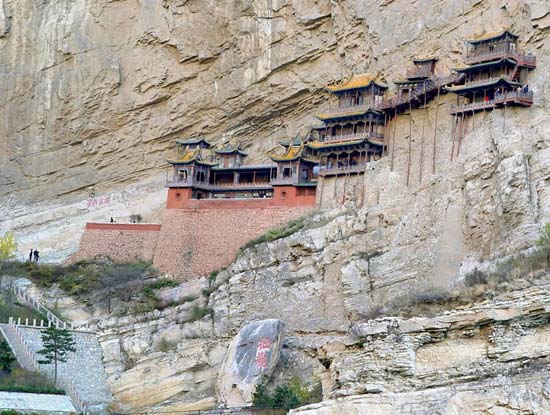 |
| Hanging Temple |
The Hanging Temple, or Hanging Monastery, is a temple on a cliff (about 75 meters or 246 feet above the ground) near Mount Heng in Hunyuan County, Shanxi Province. The construction was built during the Northern Wei Dynasty (386-557), and has a history of more than 1,400 years.
It is the only existing temple of Buddhism, Taoism and Confucianism in China. There are over 40 halls in the temple and more than 80 Buddhist sculptures made of bronze, iron, stone and mud.
The scientifically designed and skillfully built Xuankong Temple is "odd, suspended and wonderful". Completely built on the mountain cliff, it seems that the wood-structure temple is supported by the beams inserted into the chiseled holes in the cliff, but actually some of the beams don't bear the load at all.
Admission: 130 yuan (US$20.55)/person (summer); 125 yuan (US$19.76)/person (winter)
No.4: Courtyard of Family Qiao
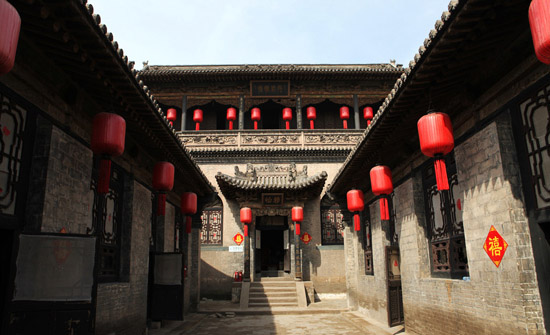 |
| Courtyard of Family Qiao |
Located in Qiaojiabao Village, Qixian County, 54 km (33.55 miles) north of Taiyuan, Shanxi Province, the Courtyard of Family Qiao was built in the late 1700s during Qing Dynasty (1644-1911) by the then influential Qiao family.
The entire courtyard house covers an area of 4,175 square meters (0.42 hectares) and consists of 6 main courtyards and 20 smaller ones, with 313 rooms altogether.
Looking from the pavilion on the southwest corner is a great way to get a bird's-eye view of the entire complex. Beyond the gate is a wall on which is carved Chinese characters, evoking themes of longevity. Various kinds of red lanterns hang in courtyards, and the carving on the roof is very delicate.
The courtyard has been featured in many famous Chinese movies and TV series, including the well-known film "Raise the Red Lantern." This internationally-acclaimed film fully demonstrates the house's character.
Admission: 40 yuan (US$6.32)/person
No.3: Yungang Grottoes
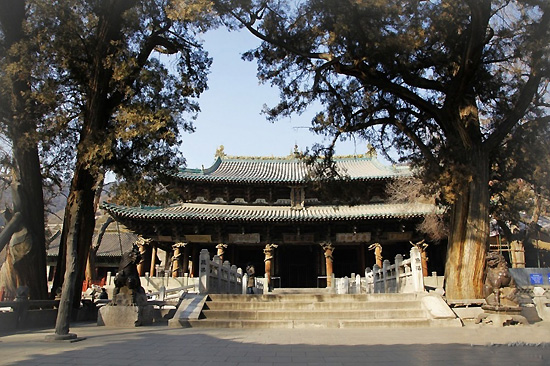 |
| Yungang Grottoes |
The Yungang Grottoes are ancient Chinese Buddhist temple grottoes, located 16 kilometers west of Datong in Shanxi Province. They were built on the north cliff of Wuzhou Mountain and extend about 1 km (0.62 miles) from east to west.
The historical records reveal that the grottoes were built during the Northern Wei Dynasty (386-557) by an abbot, and are 1,500 years old. 45 major caves and 209 other caves cover a total area of 18,000 square meters. The caves feature 51,000 stone carvings, the highest one measuring 17 meters and the smallest one only 2 cm.
The Yungang Grottoes are excellent examples of rock-cut architecture and one of the three most famous ancient Buddhist sculptural sites of China. The other two are Longmen Grottoes in Henan Province and Mogao Grottoes in Gansu Province.
In 2001, the Yungang Grottoes were made a UNESCO World Heritage Site.
Admission: 150 yuan (US$23.7)/person
No.2: Mount Wutai
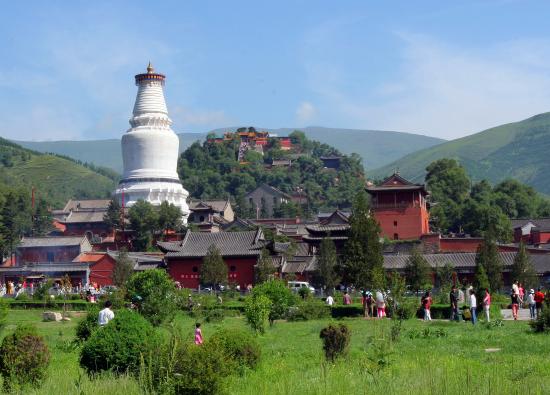 |
| Mount Wutai |
Standing at the northeast part of Shanxi Province, Mount Wutai, or the Wutai Mountain, along with Emei Mountain in Sichuan, Putuo Mountain in Zhejiang, and Jiuhua Mountain in Anhui, is one of the four sacred mountains in Chinese Buddhism.
As the dojo of the Bodhisattva Manjusri, the Bodhisattva of wisdom, the mountain is famous not only in China, but also in Japan, India, Nepal and other neighboring countries. Thousands of students and their parents flock to Wutai to pray for good luck and a bright future during the pre-exam season, especially before the National College Entrance Examination.
Admission: 168 yuan (US$26.55)/person (summer); 145 yuan (US$22.91)/person (winter)
No.1: The Old Town of Pingyao
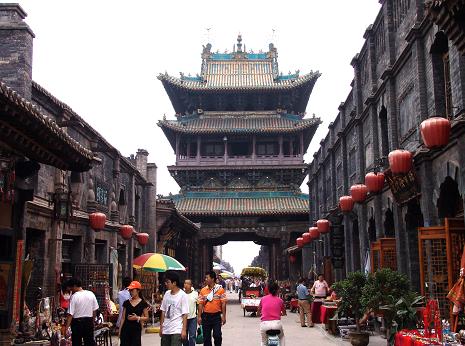 |
| The Old Town of Pingyao |
Pingyao, located in central Shanxi Province, is a well-preserved ancient town, whose history can be traced back 2,700 years. It was first built during the reign of King Xuan (827-782 BC) of the Western Zhou Dynasty (1046-771BC).
It was declared a UNESCO World Heritage site in 1997. According to UNESCO, "The Old Town of Pingyao is an outstanding example of the Han cities in the Ming (1368-1644) and Qing (1644-1911) dynasties, and it retains the traditional features of these periods. Pingyao presents a picture of unusual cultural, social, economic, and religious development in Chinese history. "
The town is surrounded by a completely intact 6-km (3.73 miles) Ming Dynasty city wall. As the central axis of the town, the South Street now still keeps its traditional layout and the unique features. The street used to be the home to banks, pawnshops, oil shops, grain shops, wood ware shops, hotels, clothing shops and dye workshops. All of this made Pingyao of one China's leading financial centers during the Qing Dynasty.
Admission: 120 yuan (US$18.97)/person

Pingyao smoked meat
Pingyao smoked meat is an indispensable dish for locals at banquets and it is also hugely popular with tourists.


